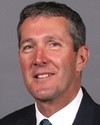My message is straightforward. The government made certain promises in the election campaign. They heard from Canadians far and wide, voters at election time, and some of those promises include spending in priority areas to stop the practice of having budgets rise across the board just because they rose last year across the board. It was to pick and choose your priority areas in the coming years, rather than just agreeing to all funding requests because the money is there.
There was another promise made to hold spending growth at inflation plus population, something we have not seen since the early and mid-1990s, when the Chrétien government was attempting to balance the budget, and they were ultimately successful at doing that.
The bottom line is to go back to what Jean Chrétien used to talk about, a balanced approach, whereby you spend in priority areas, you reduce some debt, and you cut some taxes. That's all taxpayers are looking for.
What we're not looking for is to have surpluses rung up throughout the course of the year and budgets to be blown. For example, in Paul Martin's first budget, program expenditures were supposed to increase by 2% or 3%. It sounded very, very responsible. At the end of the year, program spending was in the double digits. Why? Because those surplus dollars just came tumbling in.
In fairness, that's a challenge all governments face. The current government is also facing these pressures.
One thing I thought was very interesting was when the government made its $1 billion spending cut, members were saying this wasn't necessary because we were running a surplus. The Government of Canada should be using tax dollars efficiently, whether we're in a deficit situation or a surplus situation. Because we're in a surplus situation today doesn't mean we ought to be spending on priorities that don't achieve value for money or don't achieve measurable public policy outcomes.





